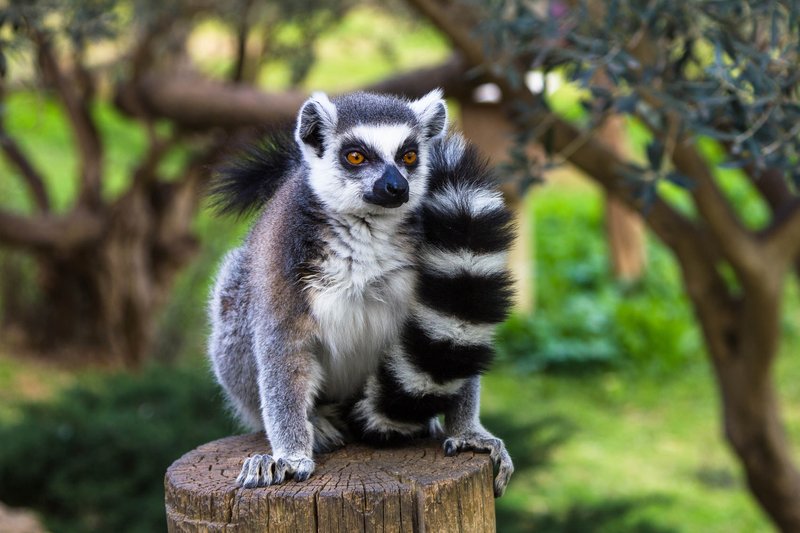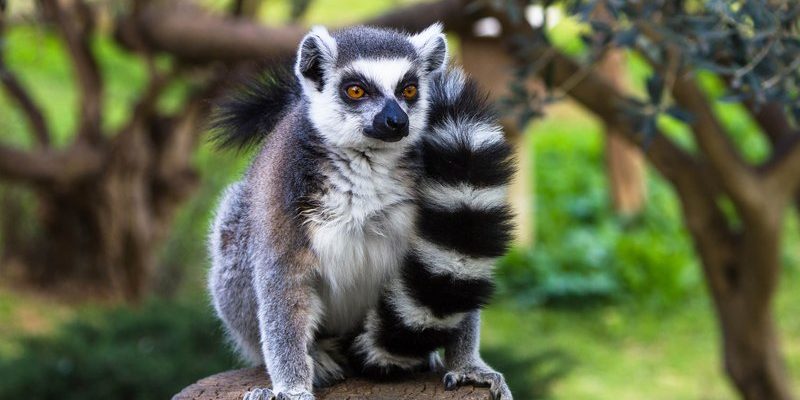
Honestly, it’s pretty interesting how these little primates navigate their lives. It’s like watching a group of toddlers play a game where they’re learning the rules as they go. They have complex social structures, communicate in various ways, and even solve problems. So, if you’re curious about what goes on in a ring-tailed lemur’s mind, you’re in for a treat.
Ring-Tailed Lemurs’ Social Intelligence
Ring-tailed lemurs are known for their strong social bonds. They live in groups called troops, which can include up to 30 individuals. These troops work together to find food, care for their young, and protect each other from predators. If you’ve ever been at a family gathering where everyone is making decisions together, you might get a sense of how these troops operate.
Social intelligence in lemurs shines through their communication skills. They use vocalizations, body language, and even scent-marking to express themselves. They have up to 30 different types of vocal sounds, each conveying a different message. For example, when they detect a predator, they emit a warning call that alerts the entire troop to take cover. It’s like having a secret code that keeps everyone safe, and it shows their ability to work together and think ahead.
Moreover, lemurs have established complex social hierarchies. Female ring-tailed lemurs, for instance, often lead the troops, which is unusual in the primate world. This matriarchal structure requires a level of understanding and cooperation among the group members, demonstrating their impressive social intelligence.
Problem-Solving Skills
You might be wondering how ring-tailed lemurs approach challenges in their environment. These little creatures are not just about cuteness; they’re also pretty crafty! When it comes to finding food, lemurs display remarkable problem-solving abilities. They use trial and error to discover how to access hard-to-reach treats.
For example, researchers have observed lemurs working together to open tricky containers to obtain food. They might try different methods—like pulling, pushing, or even climbing—to figure out the best way to get to their meal. This behavior indicates not only intelligence but also a level of curiosity that drives them to explore their surroundings and test their limits.
Additionally, lemurs have shown the ability to learn from their experiences. If a particular method worked before, they’re likely to remember it for the next time. This kind of learning is a sign of higher cognitive functions, akin to what we see in some primates and even other mammals.
Tool Use and Innovation
While ring-tailed lemurs aren’t known for using tools in the same way chimpanzees do, they still display a kind of innovation that showcases their intelligence. For instance, they’ve been observed using their environment creatively. They might rub their bodies against fragrant plants, not just for hygiene but to communicate with others or even ward off pests.
Their ability to adapt to new situations also speaks volumes about their cognitive skills. When faced with unfamiliar challenges in their habitat, ring-tailed lemurs will modify their behavior or strategies to adjust. This flexibility is crucial for survival, especially in the varied terrains of Madagascar.
Let’s not forget about social learning; younger lemurs often observe and imitate older troop members. This transfer of knowledge helps them learn essential survival skills, like where to find food or how to avoid predators. It’s a beautiful example of how intelligence isn’t just about individual smarts but is also about working together and learning from one another.
Communication and Social Interaction
The way ring-tailed lemurs communicate is another fascinating aspect of their intelligence. They don’t just shout and hope for the best; they’ve got a whole language of vocalizations and gestures to express their feelings and intentions.
Their vocal sounds range from soft purring to loud calls, depending on the situation. For example, during mating season, males will make distinct calls to attract females, showcasing not just their vocal skills but also their awareness of social dynamics. In essence, they know how to “talk” to each other—much like we do, using different tones and volumes.
Body language is also a big part of their communication. When interacting with other lemurs, they might also use grooming as a way to reinforce social bonds and even calm one another. It’s a bit like how we hug or pat each other’s backs when we want to show support or affection.
These interactions highlight their emotional intelligence and self-awareness, traits that are key components of what we often call “smart.”
How They Navigate Their Environment
Ring-tailed lemurs are incredibly skilled at navigating their environment. They spend a lot of time in trees, and their ability to move gracefully between branches is a testament to their physical intelligence.
When exploring, lemurs will assess their surroundings and make calculated decisions about where to jump or climb. They often take into account their safety and the availability of food. You can think of it like playing a strategic game where each move counts.
They also have a good memory for locations. When it comes to finding food, lemurs can remember where they’ve previously located resources. This ability to recall information about their environment shows a level of spatial awareness that’s quite impressive.
Their keen senses also play a crucial role. They have a fantastic sense of smell, which they use to find food and communicate with other lemurs. This olfactory intelligence is an advantage that helps them thrive in their habitats.
The Importance of Social Learning
Social learning is not just a buzzword; it’s a critical part of how ring-tailed lemurs develop their skills. Young lemurs learn by watching their elders. This method of learning is essential for passing on knowledge that helps them survive in the wild.
For instance, if a young lemur sees an older one successfully opening a fruit, it will likely try to mimic that behavior. Over time, this form of learning ensures that essential survival skills are not lost, allowing for a more adaptable and resilient troop.
This process can also lead to innovation within troops, as new techniques and behaviors spread through observation. Just imagine a young lemur watching its mom forage for food and picking up tricks along the way. It’s a charming reminder of how social connections can foster intelligence.
By developing these skills together, lemurs enhance their chances of survival as a community, rather than just as individuals.
So, how smart is a ring-tailed lemur? Honestly, they’re smarter than you might think. Their social intelligence, problem-solving skills, and communication abilities paint the picture of a truly remarkable animal. From working together in troops to innovating ways to navigate their environment, these little primates demonstrate a mix of cognitive and emotional intelligence that’s both fascinating and inspiring.
Their ability to adapt, learn, and communicate effectively shows that they’re not just another cute face in the animal kingdom. They have a depth to their social interactions and behaviors that many people might not recognize at first glance.
If you ever get the chance to observe ring-tailed lemurs in action, pay close attention. You might just find that there’s a lot more going on in their little minds than you first realized. As we continue to study these amazing animals, we may uncover even more about their intelligence and behavior, further solidifying their place in the rich tapestry of the animal world.

